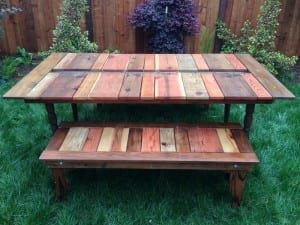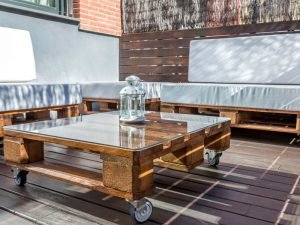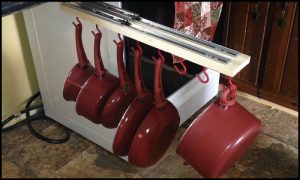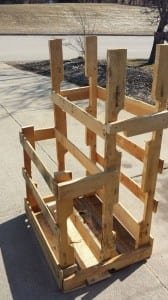Bookshelf ladders bring style and utility to home libraries and living rooms. It makes high shelves accessible and adds timeless elegance to your home. DIY bookshelf ladders can be customized to your needs and design. However, construction can create obstacles that demand careful planning and execution. This post will cover the benefits of a bookshelf ladder, the challenges of building one, and a thorough plan for building one.
Contents
Key Takeaways
- A DIY bookshelf ladder enhances both accessibility and aesthetic appeal while allowing complete customization to match your space and style.
- Successful construction requires careful attention to design complexity, material selection, and structural integrity to ensure safety and durability.
- Prioritizing safety features like proper weight capacity, stable anchoring, and slip-resistant surfaces is essential for reliable daily use.
Step-by-Step Guide to Building a DIY Bookshelf Ladder
Building a DIY bookshelf ladder is a gratifying project that improves the utility and beauty of your home. Following these precise procedures, you may make a customized piece that meets your needs and style.
Materials Needed:
- 2×2 lumber (quantity depends on desired ladder height)
- 1×2 lumber for shelf supports
- ¾-inch plywood or solid wood boards for shelves
- 1 ¼-inch pocket hole screws
- 2 ½-inch wood screws
- Wood glue
- Wood filler
- Sandpaper (100 and 220 grit)
- Paint or stain (optional)
Tools Needed:
- Miter saw
- Drill/driver
- Pocket hole jig
- Countersink drill bit
- Clamps
- Measuring tape
- Speed square
- Sanding tools
Step-by-Step Instructions:
- Design Your Ladder:
- Calculate your ladder’s height and width using your bookcase measurements and ceiling height.
- Choose the steps’ count and their intervals.
- Cut the Side Rails:
- Cut two 2x2s to the ladder’s intended length.
- If inclined legs are part of your design, cut the bottom ends at the suitable angle—usually 10 degrees—to provide stability.
- Prepare the Steps (Treads):
- Cut the ¾-inch plywood or solid wood boards into equal lengths for the steps.
- The width of each step should match the distance between the side rails.
- Sand All Components:
- Starting with 100-grit sandpaper and working up to 220-grit for a flawless finish, thoroughly sand every piece. Build the ladder frame as follows:
- Assemble the Ladder Frame:
- On a level surface, lay the side rails next to one another parallelwise.
- Mark the places for every step to guarantee equal distance.
- Drill holes into the ends of every step using a pocket hole jig.
- Using 1 ¼-inch pocket hole screws and wood glue, attach the stairs to the side rails such that each one is level and square.
- Add Shelf Supports (Optional):
- If you plan to add shelves between the steps, cut 1x2s to the desired shelf width.
- Attach these supports between the side rails at the appropriate heights using wood glue and screws.
- Fill Screw Holes and Sand:
- Apply wood filler to any visible screw holes or imperfections.
- Once dry, sand the filled areas until smooth.
- Finish the Ladder:
- Wipe down the entire ladder to remove dust.
- Apply your chosen paint or stain, following the manufacturer’s instructions.
- Allow adequate drying time between coats.
- Install the Ladder:
- Arange the ladder at the proper angle against your bookcase.
- Should you add a rolling mechanism, refer to manufacturer directions on wheel and track attachment.
Benefits of a Bookshelf Ladder
A bookshelf ladder is more than just a functional addition to your home library or living room. It transforms ordinary shelves into a captivating feature of your space. Beyond the charm it brings, incorporating a DIY bookshelf ladder has numerous practical and aesthetic benefits. Understanding these advantages can inspire you to create your own DIY bookshelf ladder, tailored precisely to your needs. Here are several key reasons why a bookshelf ladder can significantly enhance your home.
Enhanced Accessibility
Reaching items on higher shelves often requires awkward stretching, climbing onto chairs, or pulling out step stools, each of which poses safety concerns. A bookshelf ladder effortlessly solves this issue by providing safe and easy access to every book, decorative item, or storage basket. Whether your shelves span from floor to ceiling or you’re simply trying to utilize higher wall space, a DIY bookshelf ladder ensures everything stays within comfortable reach. This convenience is particularly beneficial for seniors, children, or anyone with mobility concerns, making your home safer and more inclusive.
Improved Organization
With a DIY bookshelf ladder, you’ll find organizing and retrieving items easier than ever. Rather than neglecting valuable upper storage due to inconvenience, a ladder allows you to maximize vertical space without sacrificing accessibility. It encourages efficient use of every shelf, enabling you to better categorize and arrange your collections. Books and collectibles will no longer gather dust out of sight, leading to a more organized and clutter-free living environment.
Aesthetic Appeal
Beyond its practical uses, a bookshelf ladder adds considerable visual interest to your interior decor. A DIY bookshelf ladder introduces an elegant touch reminiscent of classic libraries or traditional studies, instantly elevating the aesthetic value of any room. The ladder becomes a focal point, drawing attention to your beautifully arranged shelves, collectibles, and personal touches. Whether your home style leans toward rustic charm, contemporary chic, or classic elegance, you can customize your DIY bookshelf ladder with finishes, stains, or paints that seamlessly match your existing decor.
Customization and Personalization
Constructing your own DIY bookshelf ladder allows for extensive customization. Unlike store-bought options, a DIY approach ensures the ladder meets your exact specifications, such as height, width, materials, and color. This flexibility lets you adapt the ladder to unique architectural features of your space, such as angled ceilings, built-in shelves, or unusually sized walls. Personalizing your ladder not only enhances the practicality of your shelving system but also creates a distinctive, one-of-a-kind element that reflects your personal style and craftsmanship.
Increased Home Value
Built-in features, including custom shelving with a bookshelf ladder, significantly boost your home’s overall value. Potential buyers often perceive these thoughtful details as luxury touches, contributing positively to their impression of the property. Investing in a DIY bookshelf ladder shows attention to detail and a commitment to functionality and style, both of which resonate strongly with homebuyers seeking comfortable yet sophisticated living spaces.
By constructing a DIY bookshelf ladder, you not only enrich your home’s accessibility and visual charm but also enjoy the satisfaction that comes from creating something tailored specifically for your lifestyle. Whether you’re seeking better organization, enhanced aesthetic appeal, or improved accessibility, incorporating a bookshelf ladder into your living space is a rewarding and beneficial project to undertake.
Challenges in Constructing a Bookshelf Ladder
Constructing a bookshelf ladder offers significant benefits, yet it’s not without certain challenges. Before beginning your DIY bookshelf ladder project, it’s important to recognize these potential hurdles. Being aware of these obstacles can help you plan more effectively and ensure a successful outcome. From design complexities to practical considerations, here are several challenges you might encounter when building your bookshelf ladder.
Design Complexity
One major challenge of building a bookshelf ladder lies in its design complexity. Achieving an appealing aesthetic that complements your existing furniture and decor requires thoughtful planning. You’ll need to consider the ladder’s size, proportion, and visual balance relative to your shelves. Miscalculations in design can lead to an awkward or disproportionate final product. Sketching detailed plans, measuring accurately, and visualizing how the ladder integrates into your space are crucial steps that can be more challenging than anticipated.
Ensuring Structural Integrity
The bookshelf ladder must safely support your weight while providing stable access to upper shelves. Achieving structural integrity involves precise construction techniques and choosing the right materials. Poor joinery, inadequate bracing, or low-quality lumber could result in a ladder that’s unsafe or unstable. Ensuring that each step is perfectly level and secure takes patience and careful attention to detail. If structural integrity isn’t prioritized, the DIY bookshelf ladder may pose risks rather than solving accessibility issues.
Material Selection
Selecting the appropriate materials presents another notable challenge. You must balance aesthetics, durability, and budget, all while choosing materials that harmonize with your home’s style. Hardwoods like oak or maple offer strength and visual appeal but come at higher costs and can be harder to work with. Softwoods, such as pine, are easier to handle and budget-friendly but may lack durability for frequent use. Metal components, if used, introduce additional considerations, such as weight, installation complexity, and style compatibility. Navigating these options can be challenging, especially for beginners.
Installation Precision
If your DIY bookshelf ladder incorporates rolling or sliding mechanisms, precision in installation becomes critical. Installing tracks or rails requires exact alignment to ensure smooth, safe operation. Even minor inaccuracies can result in a ladder that jams or wobbles, compromising both safety and usability. Additionally, ensuring that wall-mounted elements are securely anchored requires understanding proper installation methods. Precision work like this may be challenging for DIYers lacking experience or specialized tools.
Tool Requirements and Skill Level
Constructing a bookshelf ladder demands specific tools and a reasonable woodworking skill level. Essential equipment such as saws, drills, sanders, clamps, and measuring tools must be accessible. Some tasks, like creating pocket holes or angled cuts, involve tools that might be unfamiliar or intimidating to novices. The construction process can quickly become overwhelming without adequate experience or confidence in using these tools. You may need to invest extra time learning how to handle these tools safely and effectively before embarking on your project.
Time Commitment
Finally, constructing a DIY bookshelf ladder is not typically a quick project. It requires dedicated time for planning, cutting, assembling, finishing, and installation. Rushing through steps increases the likelihood of mistakes and can negatively impact the ladder’s quality. If you’re balancing construction with other commitments, maintaining momentum and motivation throughout the process can also prove challenging.
By anticipating these challenges in advance, you can better prepare yourself, making the DIY bookshelf ladder project manageable, rewarding, and ultimately successful.
Safety Considerations
When constructing and using a DIY bookshelf ladder, safety must remain a top priority. A ladder adds both beauty and functionality to your home, but careful consideration ensures it won’t pose unnecessary risks. Understanding these essential safety considerations will help you build a reliable DIY bookshelf ladder that’s secure and safe for daily use. Proper planning, thoughtful construction, and ongoing maintenance can prevent accidents and provide peace of mind.
Weight Capacity
Determining the appropriate weight capacity of your DIY bookshelf ladder is crucial for safe usage. The ladder must comfortably support the weight of the user, along with any objects being carried or retrieved from the shelves. Be mindful of the materials selected—strong hardwood or reinforced metal components offer higher weight limits. Clearly understand the maximum load your ladder can bear, and avoid exceeding this limit to maintain structural integrity.
Stability and Anchoring
Stability is vital when using your DIY bookshelf ladder. A ladder that feels shaky or wobbly during use can easily lead to slips, falls, or other injuries. To ensure stability, make sure the ladder’s feet are evenly positioned and sit firmly on the floor. If your design involves rolling or sliding ladders, use robust and professionally rated hardware for smooth, stable operation. Consider securely anchoring your ladder to the bookshelf or wall to provide extra stability, particularly if it’s frequently used or especially tall.
Proper Step Spacing and Depth
The spacing and depth of steps directly impact the ladder’s usability and safety. Steps that are too far apart can make climbing uncomfortable and unsafe, while overly narrow steps increase the risk of slipping or losing balance. Standard spacing typically ranges between 10-12 inches, with step depth around 4-5 inches. Ensure your DIY bookshelf ladder follows these guidelines for comfortable, secure footing and stable climbing.
Slip-Resistant Surfaces
Slippery surfaces can quickly become hazardous, especially on ladders designed for regular use. To prevent slipping, consider applying a non-slip finish or adding adhesive grip strips to each step. This simple addition greatly improves traction, making your DIY bookshelf ladder significantly safer to climb, even when wearing socks or smooth-soled shoes.
Regular Maintenance Checks
Even a well-built DIY bookshelf ladder requires regular maintenance to ensure ongoing safety. Periodically inspect your ladder for any signs of damage, wear, loose connections, or instability. Immediately address any issues like loose screws, cracked wood, or worn hardware. Regularly tighten joints, reapply protective finishes, and ensure any moving parts operate smoothly. Consistent maintenance keeps your ladder safe, reliable, and visually appealing for years.
Clearance and Space
Consider the surrounding environment when positioning your ladder. Adequate clearance between the ladder and nearby furniture or walls is necessary to safely move and climb without obstruction. Ensure the ladder’s path is always clear to avoid accidental collisions or knocking items off nearby shelves. Properly planning your space promotes a safer climbing experience and reduces the risk of injury or damage.
Safe Usage Practices
Finally, no matter how robust your DIY bookshelf ladder is, safe usage practices remain essential. Always face the ladder when climbing, use both hands for stability, and avoid overreaching or leaning too far to either side. Teach family members or guests proper ladder usage and clearly communicate any specific weight or usage limitations.
By keeping these safety considerations in mind, your DIY bookshelf ladder project can successfully provide both functional beauty and reliable security, enhancing your home’s comfort without compromising safety.
Conclusion
Building a DIY bookshelf ladder brings both functionality and timeless charm to your home, providing easy access and aesthetic appeal. Though construction may pose challenges, careful planning and attention to safety considerations ensure a rewarding outcome. With thoughtful design and execution, your bookshelf ladder will be a practical and stylish addition to your living space.
FAQ DIY Bookshelf Ladder
- Can I convert my fixed bookshelf ladder into a rolling ladder later?
- Yes, you can retrofit a fixed ladder with rolling hardware. You’ll need to install a track system along the top of your bookshelf (typically a metal rail), attach wheels or casters to the top of the ladder, and add stabilizing feet at the bottom. This conversion typically costs $50-150 for hardware and requires precise measurements to ensure the track is level and the wheels align
- What’s the ideal angle for leaning a bookshelf ladder against shelves?
- The optimal angle for a leaning bookshelf ladder is between 70-75 degrees from the floor (or 15-20 degrees from vertical). This angle provides the best balance between stability, comfortable climbing, and space efficiency. A steeper angle (closer to vertical) saves floor space but can feel less stable, while a shallower angle is more stable but takes up more room and may be harder to climb.
- How do I protect my bookshelf and wall from ladder damage?
- Add protective padding to contact points where the ladder touches your bookshelf or wall. Felt pads, rubber bumpers, or leather strips work well and prevent scratches or dents. For the top of the ladder, use cushioned hooks or padded brackets. For the bottom, rubber or felt feet prevent floor scratching and improve grip. Replace these protective materials every 6-12 months depending on usage.
- What weight capacity should I design for if multiple family members will use the ladder?
- Design your DIY bookshelf ladder to support at least 250-300 pounds, even if users weigh less. This safety margin accounts for dynamic loading (the extra force from climbing motion), carrying books or items, and ensures longevity. Use 2×3 or 2×4 lumber instead of 2×2 for side rails if supporting heavier weights, and space steps no more than 12 inches apart for better weight distribution.
- Are there building codes or regulations I need to follow for a DIY bookshelf ladder?
- While most DIY bookshelf ladders for personal home use don’t require permits, they should follow general safety guidelines. If you’re permanently attaching the ladder to walls or structures, check local building codes. For rental properties or homes you plan to sell, ensure the ladder meets OSHA guidelines for portable ladders (minimum 3-inch step depth, maximum 14-inch step spacing). Some homeowners insurance policies may have requirements for custom-built structures, so verify coverage before building.






